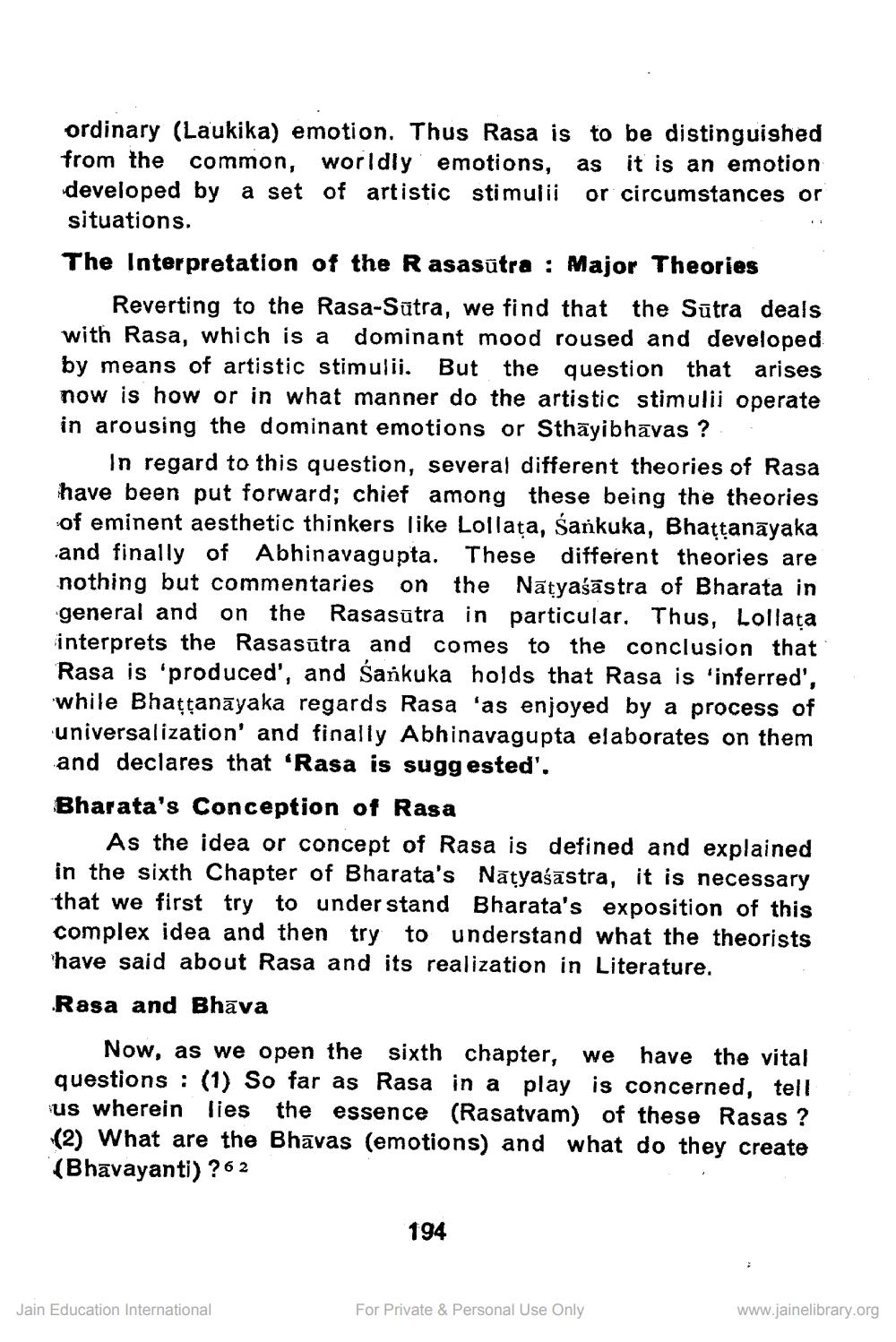________________
ordinary (Laukika) emotion. Thus Rasa is from the common, worldly emotions, developed by a set of artistic stimulii situations.
The Interpretation of the Rasasutra: Major Theories
Reverting to the Rasa-Sutra, we find that the Sutra deals with Rasa, which is a dominant mood roused and developed by means of artistic stimulii. But the question that arises now is how or in what manner do the artistic stimulii operate in arousing the dominant emotions or Sthayibhāvas ?
to be distinguished as it is an emotion or circumstances or
In regard to this question, several different theories of Rasa have been put forward; chief among these being the theories of eminent aesthetic thinkers like Lollata, Sankuka, Bhaṭṭanāyaka and finally of Abhinavagupta. These different theories are nothing but commentaries on the Natyaśastra of Bharata in general and on the Rasasūtra in particular. Thus, Lollata interprets the Rasasutra and comes to the conclusion that Rasa is 'produced', and Sankuka holds that Rasa is 'inferred', while Bhaṭṭanayaka regards Rasa 'as enjoyed by a process of universalization' and finally Abhinavagupta elaborates on them and declares that 'Rasa is suggested'.
Bharata's Conception of Rasa
As the idea or concept of Rasa is defined and explained in the sixth Chapter of Bharata's Natyaśastra, it is necessary that we first try to understand Bharata's exposition of this complex idea and then try to understand what the theorists have said about Rasa and its realization in Literature.
Rasa and Bhāva
Now, as we open the sixth chapter, we have the vital questions (1) So far as Rasa in a play is concerned, tell us wherein lies the essence (Rasatvam) of these Rasas ? (2) What are the Bhāvas (emotions) and what do they create (Bhavayanti)? 62
Jain Education International
194
For Private & Personal Use Only
www.jainelibrary.org




